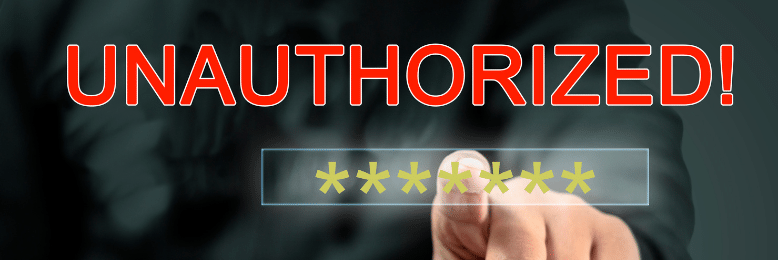What is Shadow IT, and Why Should You Know About It?
May 16th, 2022 | 4 min. read

Your team will do anything to get the job done efficiently. Sounds great, right? Well, not if they're turning to unsanctioned software in order to do it. That might not seem like a big deal, but it could open security gaps in your network that your internal or outsourced IT team doesn't know about. It's an opportunity for hackers to enter your network unchallenged. We call it shadow IT, and it's a serious concern.
One of the biggest issues presented by shadow IT is just how prevalent it is in the workplace. In fact, in many cases, they are implicitly permitted or even encouraged. Almost all business managers want their teams to act as problem solvers and fix inefficiencies where they can find them. Unfortunately, a lot of them also believe your company's security measures are roadblocks and bottlenecks that they need to bypass.
At ITS, we've helped businesses secure their networks AND optimize their technology. We are firm believers that cybersecurity and operational efficiency can work in harmony. You should never have to sacrifice one for the other.
In this article, we'll help you understand how to avoid and mitigate the occurrence of shadow IT by diving into the following topics:
- What is Shadow IT?
- Why is Shadow IT Concerning?
- Why is Shadow IT Happening?
- What Can We Do to Slow Shadow IT?
What is Shadow IT?
Despite the ominous name, shadow IT isn't always malicious, and they're not always renegade. It refers to the use of any type of IT service, application, hardware, or software that anyone on your team procures and manages without the knowledge of the IT department. In other words, it's an application that a team member downloaded without asking your tech guys first.

It could be anything from collaboration software, messaging apps, scheduling tools, or cloud services. If your IT team doesn't know about it, it's shadow IT. And, they can't secure it unless they know about it.
What makes matters worse is that this is happening more than you might think. According to research by Everest Group, 50% of IT spending in large enterprises goes to shadow IT. That's a lot of unsecured systems that could end up costing you more than you bargained for.
Why is Shadow IT Concerning?
You might be asking: what's the big deal? For starters, the downloaded technology or application may not be secure. Some of them may come with inconsistent or insufficient security controls. Or, they might have risks and vulnerabilities that your team is not aware of. In fact, it could create wide security gaps – and your IT department, the one responsible for ensuring security and compliance, doesn't even know about it.
But that's not even the scary part. Typically, apps downloaded without IT's knowledge include things like file sharing, storage applications, collaboration tools, or social media. Those all may sound harmless, but they all create opportunities for hackers to waltz in and steal information.
If you have sensitive data stored on an unsanctioned and unsecured application, that information could easily be hacked, stolen, or leaked. Those apps could also help create a backdoor for cybercriminals to get into your network. Once in, they can deploy malware to gain access to your business and shut your operations down.
Just how concerned should we be about this? Well, according to Gartner, one-third of successful attacks experienced in 2020 will be on Shadow IT resources. That can really take a toll on the company.
Why is Shadow IT Happening?

It all boils down to efficiency. Your team wants to be productive. If downloading an app can help them achieve that faster, then it becomes very attractive. Add in the fact that downloading and installing applications is quick and easy, and you get the perfect environment for shadow IT.
Another component is the ease of use. Many people involved in shadow IT are simply looking for better alternatives to existing systems. Your current list of apps might be cumbersome to use or have a high learning curve. Finding an alternative option that can make their lives easier can override whether that solution is secure or not.
Let's face it; security isn't always top-of-mind for your team. Most of the time, productivity and ease of use will trump everything.
What Can We Do to Slow Shadow IT?
There's really no easy way to get rid of shadow IT in your company. However, there are ways to mitigate how prevalent they become inside your organization and prevent them from happening in the future. Take a look below at some of the things you can do:
 Acknowledge That Shadow IT is a Problem
Acknowledge That Shadow IT is a Problem
The first step to solving a problem like shadow IT is to acknowledge that it IS a problem that needs to be resolved. You can't get rid of shadow IT if you turn a blind eye to it or encourage the practice. You need to accept that it conflicts with your security efforts and that there is a better way of improving your team's productivity with the help of your IT.
 Educate Your Team
Educate Your Team
Like we've said before, cybersecurity is not the first thing your team is thinking about. They might not even know the risks involved in downloading unsecured apps and services. Perhaps they just need to know why it's important for IT to keep track of the apps and tools they're using for work.
Explain to them what shadow IT is, the security dangers, and why you need the support of all employees to help plug the security gap. You can even incorporate all of that into your regular cybersecurity awareness training.
 Leverage Shadow IT to Your Advantage
Leverage Shadow IT to Your Advantage
In addition to educating your team, ask them to collaborate with the internal or outsourced IT department on the apps they believe make them more productive. Gather insights on what parts of your system need improvement, which alternatives might work better, and which ones are easiest to use. The data is already there; you might as well make the most out of it.
Given time, you can determine if those tools are secure and effective, so you can officially deploy those that are enterprise-ready. Or, IT might be able to identify alternative tools that are secure and meet the needs of your employees.
 Bridge the Gap Between Your Team and IT
Bridge the Gap Between Your Team and IT
One of the best ways of preventing shadow IT from happening is to open the lines of communication between IT and your team. The main source of the problem stems from the preconceived notion that neither party will listen to the other. However, if you are able to bridge that gap, your IT team will be more involved in the process. That will allow them to help safeguard the company and enable productivity tools that drive innovation and efficiency for team members.
Ready to Address Shadow IT in Your Company?
Your company might not be able to eradicate shadow IT completely. However, reducing its prevalence will go a long way towards protecting your company, your employees, and customers/clients. Start the conversation with employees and strive for collaboration with them. It's the best way to find the middle ground between security and productivity.
At ITS, we help our clients find secure solutions that help them make the most out of their technology. If you want to learn more, check out our article on the six ways technology improves productivity.
Mark Sheldon Villanueva has over a decade of experience creating engaging content for companies based in Asia, Australia and North America. He has produced all manner of creative content for small local businesses and large multinational corporations that span a wide variety of industries. Mark also used to work as a content team leader for an award-winning digital marketing agency based in Singapore.
Topics:
